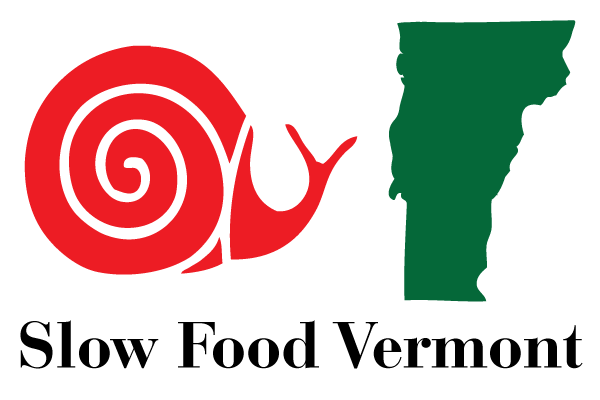Bergfichte
I brought back a small piece of “Bergfichte” from my trip to Washington, D.C. It’s a cheese beyond a cheese, made by a cheesemaker who is beyond a cheesemaker. His name is Willi Schmid, and I feel like I’m slowly getting to know him, even though we’ve never met.
Here’s a snippet from his website:
Willi Schmid grew up in an eight-person farm family in Nesslau-Bühl in Obertoggenburg. Deep agricultural roots and a love of nature and animals are the foundation of his vocation as cheesemaker. For Willi, milk is much more than just raw material. In the dairy, natural processes come together, just as Willi’s passion transforms him into a cheesemaker.
Last fall, I went to a cheese tasting during the Slow Food International biannual conference, Terra Madre, called “Swiss Cheese: Wood and Resin.” Hosted by the warm, approachable Dominik Flammer, a Swiss food writer and cheese expert, the tasting not only blew open the door onto the spruce-covered Alpine world of Swiss cheese, but changed the way I feel about tastings in general.
Maybe it was because my friends Jess and Josh were at the tasting, too, and that they are cheese lovers and friends of Swiss culture, or because this particular workshop was kicking off a day-long bender of further tastings that included Albanian cuisine and traditional foods of Brittany …
But I chalk up the awesomeness to Dominik’s unpretentious descriptions of the cheeses and explanations of Swiss cheese-making history, and to the absolutely unbridled enthusiasm with which he devoured each piece of cheese as he spoke. Lips smacking into the microphone, our translator struggling to keep up, he’d munch, pause, talk about how Willi Schmid tastes his delivered cows’ milk every morning, noting which herbs must be coming into season, or on which pastures the cows have been grazing.
Of course, the quality of the cheese didn’t hurt, either: Dominik clearly sought out the most extraordinary Swiss cheeses made today. “You won’t be able to meet any of the producers here at the conference,” he told us. “Most of them are doing this on such a small scale that they can’t manage to take 4 or 5 days off to come to Italy. You’ll have to visit them yourselves!”
We tasted La Zorette from Rougemont/Gstaad, named for the French dialect word for “little wood.” It had a thick ash rind and tasted of the forest in early spring. Le Cupalle, also from the Gstaad region and made with raw, full-fat cow’s milk, is buttery, redolent of hay and summertime; it also introduced us to the concept of spruce cambium binding a cheese (a technique also used here in Vermont by Jasper Hill Farm for their beloved Winnimere). “All of these producers use their own homemade rennets, produced from dried calves’ and goats’ stomachs aged in whey,” explains Dominik.
And then, the Willi Schmid cheeses.
First, the Bergfichte (Mountain Spruce): Salty crystals in the rind; a gentle, savory paste. Notes of green grass, summer sunshine; your hands are on the cow’s strong neck, feeling its warm pulse. As you approach the rind, the spruce hits you, and suddenly you’re a cow basking in the sun on a steep, buttercup-dotted Alp on one of the first warm days in June, looking off at the shady spruce forest in the distance, its diffuse darkness representing to you — eternity?
Other Willi Schmids tasted were the Wooden Sheep (Hölzig Schaf) and the Wooden Goat (Hölzige Geiss). They are brighter: the Sheep citrusy, light, craggy, and the Goat tangy, pasty, lightly sweet.
During the tasting, we’re moistening our mouths and clearing our palates with Swiss wine, but Dominik is ambivalent about the pairings. “It’s better to spend your money on the cheese, not the wine, during a tasting.” That will do!
I’ve always had an idealistic notion of Switzerland. I’ve only been there a few times, but each visit has given me an indelible happiness that’s survived, buried under hay, over years: sunshine, hay, cows, topless women sunbathing on riverbanks, and … cheese.
Therefore, to come upon Willi Schmid’s cheeses in an open vitrine in a wine shop deep in suburban Northern Virginia, and to buy a wedge of Bergfichte (or have it bought for me — thanks mom and dad! — at $35.99/lb) and to eat it, slice by slice, for lunch over the course of a week … I’m taken somewhere, I’m not sure where, certainly not the Switzerland of real life, bridges, car crashes, electric bills and slippery sidewalks … but to a bolt-blue afternoon, a meadow picnic with white wine in tiny glasses, an itchy wool blanket, and a round of runny stinking cheese, the sun shining so strongly and smelling so sweet that you can’t help but take off your shoes and socks, then your top, and finally your pants…
*photos by Jess Bongard


